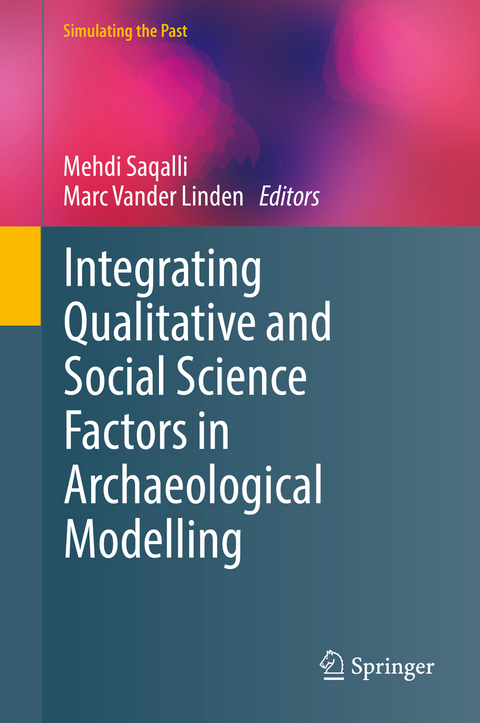
Integrating Qualitative and Social Science Factors in Archaeological Modelling
Springer International Publishing (Verlag)
978-3-030-12722-0 (ISBN)
The epistemological discussions will appeal to readers as well as the resilience socio-anthropological factors provide facing climatic fluctuations. Integrating Qualitative and Social Science Factors in Archaeological Modelling will appeal to students and researchers in the field.
Agronomist and doctor in farming systems analysis, Mehdi Saqalli works on rural past and present societies through the use of modelling tools, particularly multi-agent tools, for the understanding of localized dynamics combining socio-anthropological and agro-environmental factors in the future of these societies. Field sites concern several present-time tropical and temperate areas on development issues but also past Neolithic societies in Europe and the Mediterranean area. The aim is to formalize this complexity by articulating spatial, temporal and socio-political scales through the use of dynamic spatialized socio-geographical models. Marc Vander Linden is a specialist in European Later European prehistory and currently holds a temporary lectureship at the University of Cambridge, where he teaches archaeological methods. His research interests include spatial and temporal variability of material culture, early farming systems, demography, development-led archaeolology, and the use of quantitative and modelling methods. He has run fieldwork in Belgium, Syria, Great Britain, Bosnia and Herzegovina and Montenegro.
Introduction.- O tempora O mores : Building an epistemological procedure for modeling socio-anthropological factors: stakes, choices, hypotheses and constraints.- From culture difference to a measure of ethnogenesis.- Modeling niche construction in Neolithic Europe.- A new reading of the French Bronze Age using data from development-led archaeology: Bronze Age survey database (DatABronze).- What can a MAS tell us about the Bantu migrations 3000 years ago?.- The evolutionary transition from biologically to culturally based social systems: Qualitative modeling issues.- Data models, connectivity between sites and the chaîne opératoire approach: the chalcolithic southern levant as a case study.- Conclusion.
"The volume is most likely to appeal to archaeological modellers who will find interesting case studies with a somewhat wider disciplinary outlook. The aim of generating mutual understanding is, however, commendable, and those non-modellers who venture to pick up a book about modelling and persevere will be afforded valuable insights in the process and merits of striving to integrate qualitative and social science factors into archaeological models." (Daniël van Helden,Antiquity, Vol. 95, 2021)
| Erscheinungsdatum | 17.07.2019 |
|---|---|
| Reihe/Serie | Computational Social Sciences | Simulating the Past |
| Zusatzinfo | VIII, 231 p. 26 illus., 16 illus. in color. |
| Verlagsort | Cham |
| Sprache | englisch |
| Maße | 155 x 235 mm |
| Gewicht | 484 g |
| Themenwelt | Sozialwissenschaften ► Soziologie ► Empirische Sozialforschung |
| Schlagworte | agent based modeling and history • ancestors and algorithms • Computational Social Sciences • Data-driven Science, Modeling and Theory Building • dynamics in human and primate societies • model-based archaeology • prehistoric societies and modeling • socio-anthropological modeling |
| ISBN-10 | 3-030-12722-2 / 3030127222 |
| ISBN-13 | 978-3-030-12722-0 / 9783030127220 |
| Zustand | Neuware |
| Haben Sie eine Frage zum Produkt? |
aus dem Bereich


